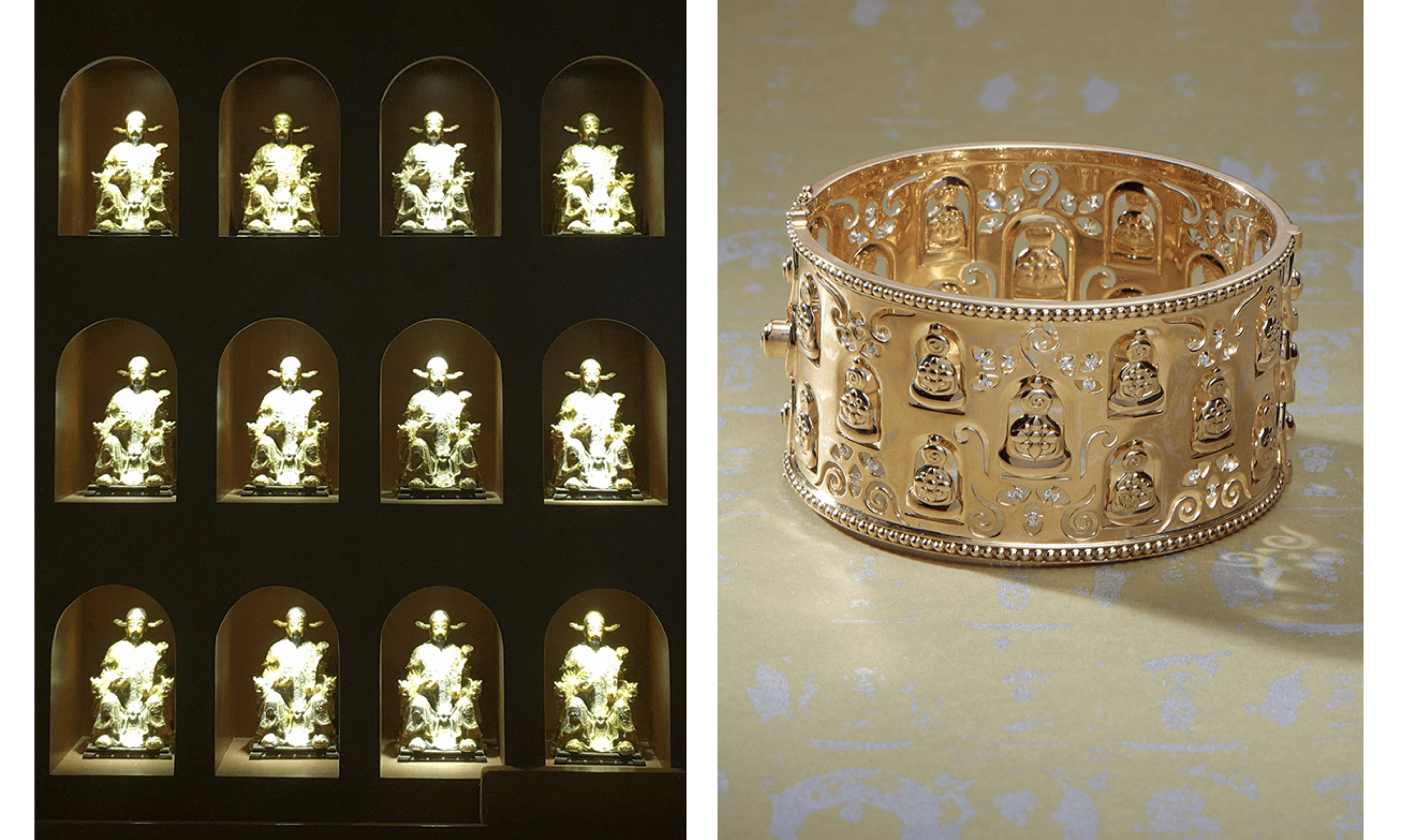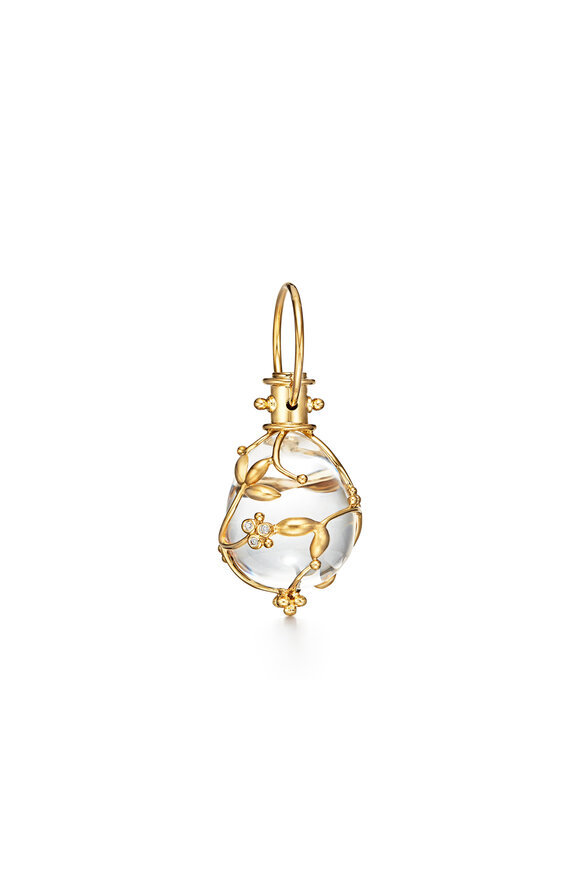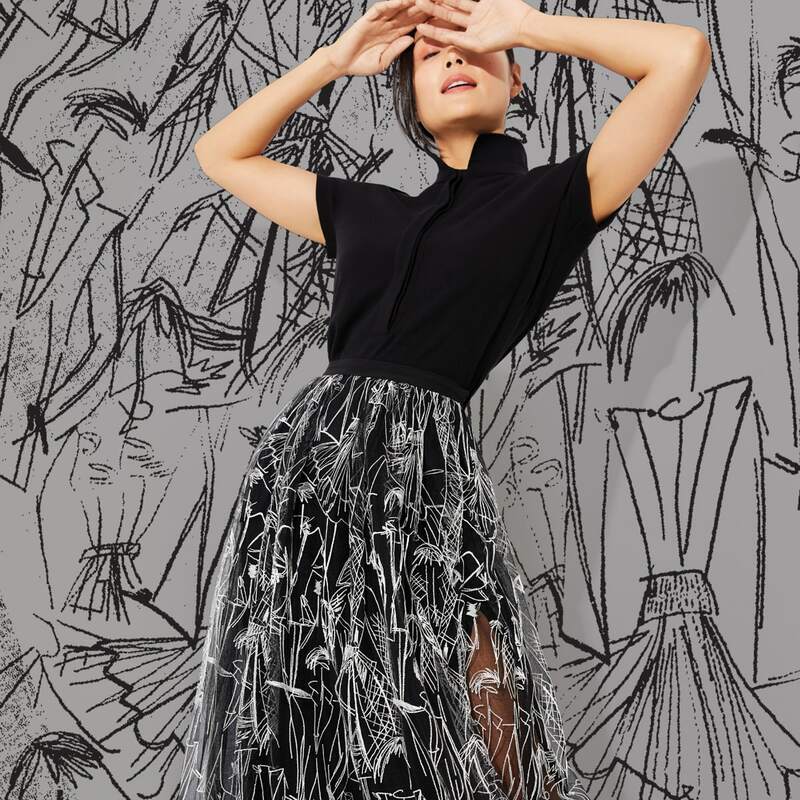Temple St. Clair
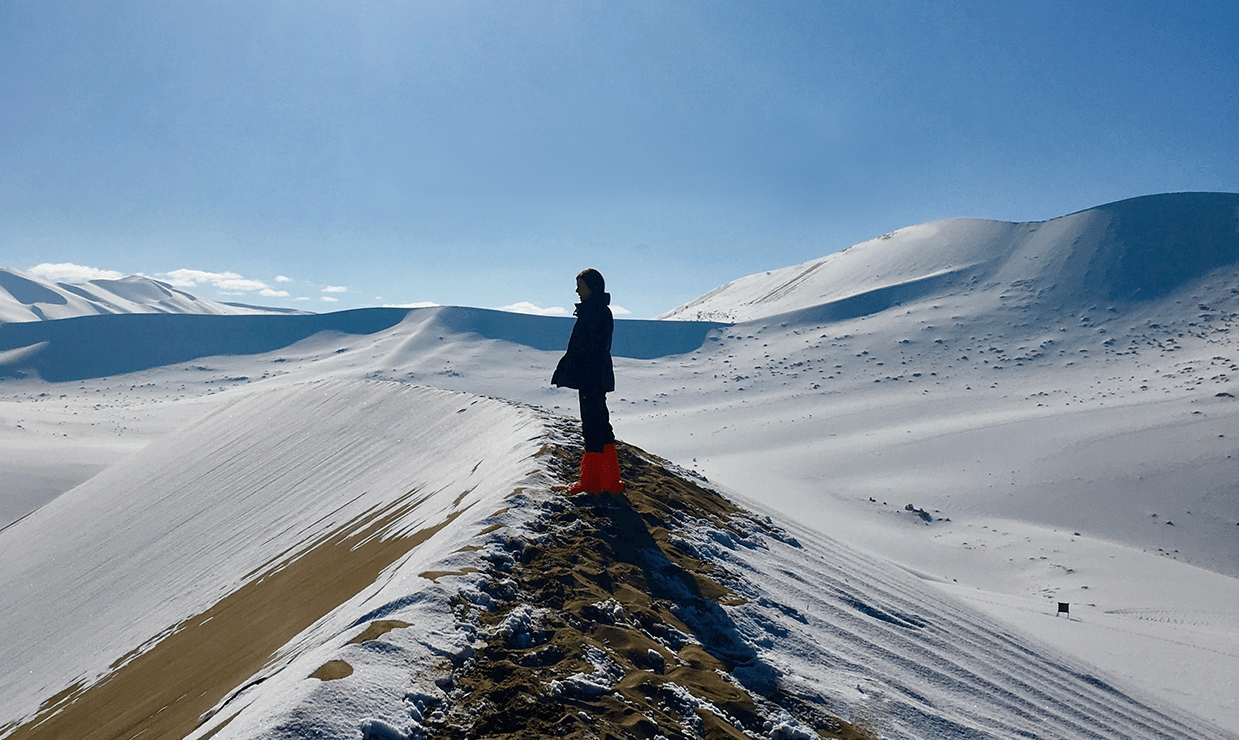
We sat down with jewelry designer, Temple St. Clair to learn about her inspiration for her new collection The Silk Road.
It's about the journey ... not the destination.
As a lifelong traveler I have always been fascinated by the Silk Road and the ideal it upheld of wildly different cultures merging and shaping one another.
For centuries, the Silk Road connected land and sea from east to west, from Italy to Persia, through the ancient cities of Samarkand and Tashkent, all the way to the Gobi desert of western China. Those who journeyed along the Silk Road shared and traded everything—from spices and gemstones to ideas and religion—creating a remarkable and expansive history of collaboration and exchange along the way.
My latest collection is inspired by the art, architecture and beliefs carried along this famous route. Most of all I seek to capture the effect of travel on our minds and memories. I mean to illustrate in jewels the shapes, color, light and actual stories that you experience on an exotic journey.
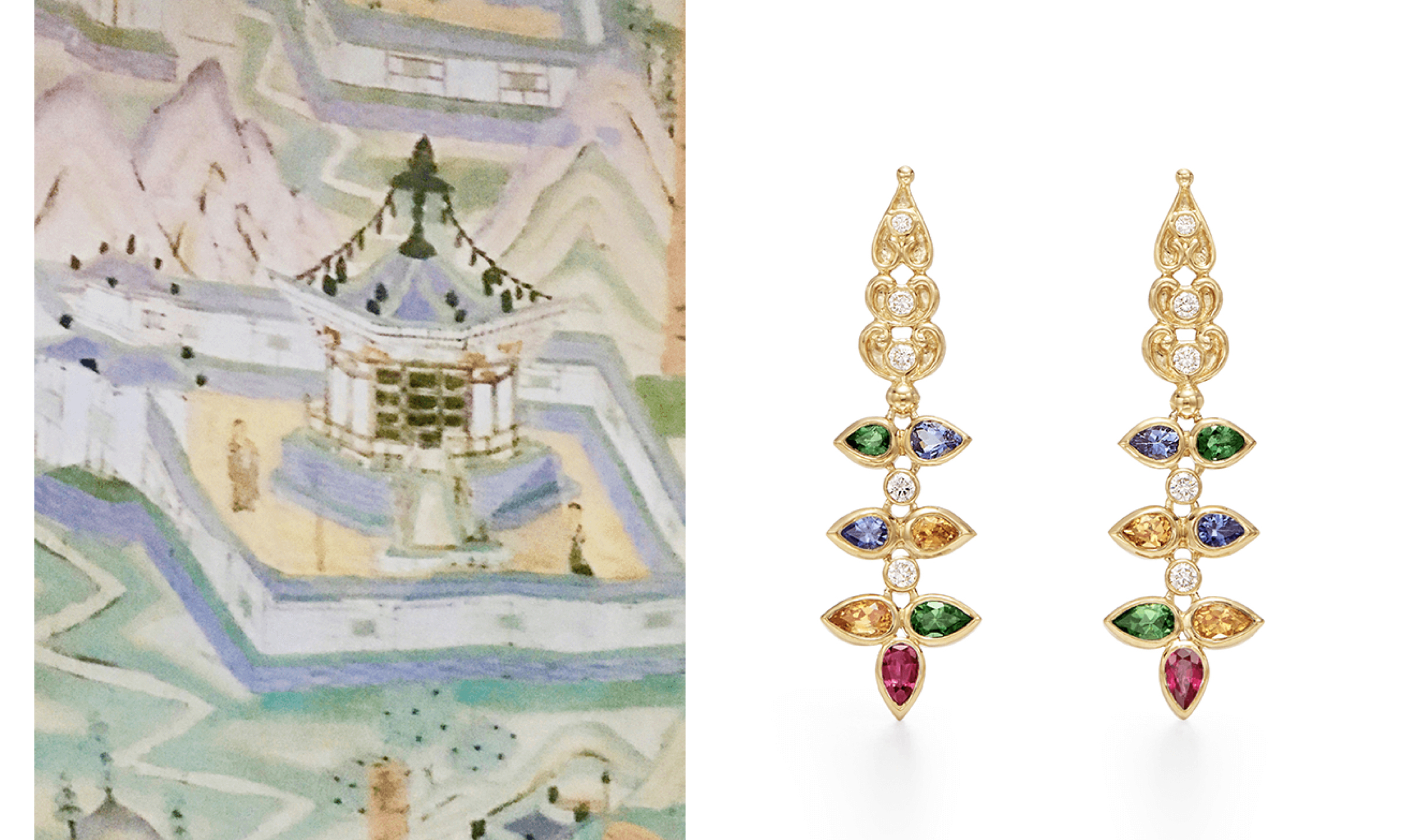
Each piece recalls a moment, idea, or location found along the Silk Road. Rich gem colors in tsavorite, tanzanite, spessartite and ruby hint at the exotic vegetation found in an oasis and reflect the richness of the silks and textiles that might be traded there.
Mysterious shades of spinel from gray blues to violets combined with royal blue moonstone are used to echo the pigments used for the Buddhist murals in the Mogao caves.
Spirals, crescent moons and piqued shapes are used as golden details to reflect fragments of architecture that might be seen or shapes cast by a shadow along the way.
Shapes and colors represent collected memories from the journey, the influence and inspiration that remain with us. A love of history, of art, and of travel, is found here just as it was along the Silk Road itself.
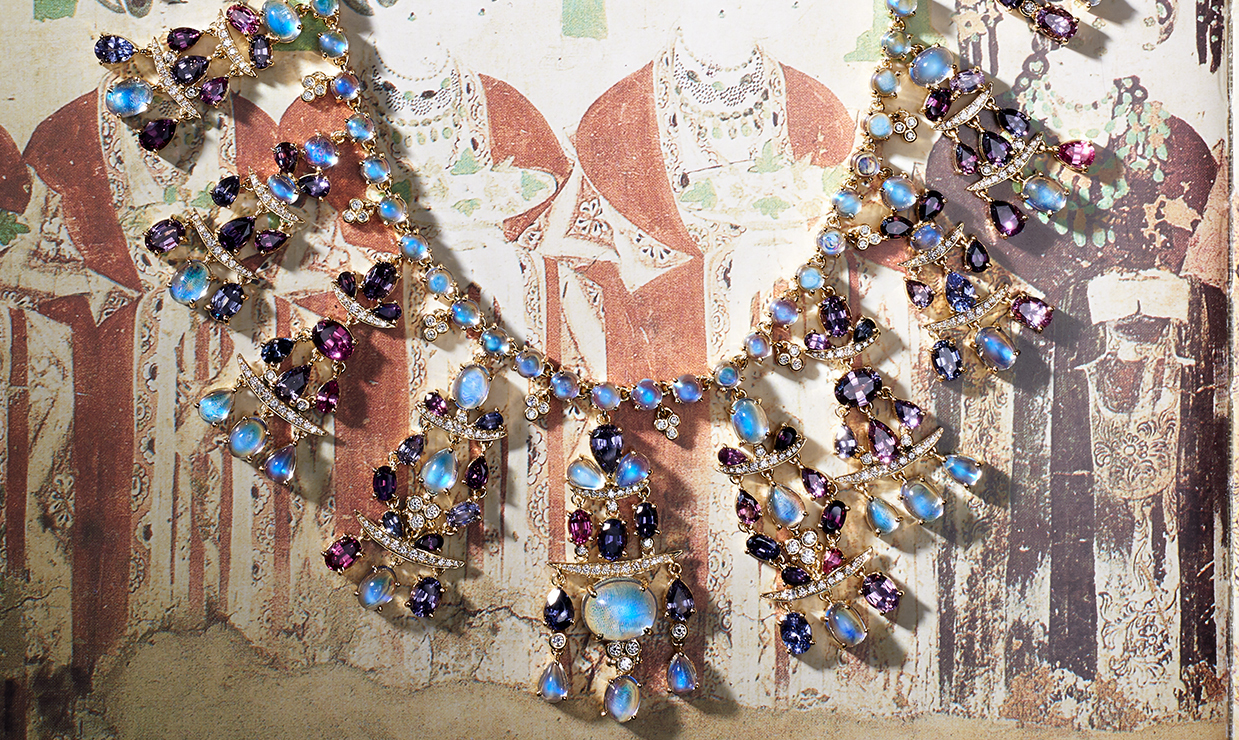
The Backstory
A few years ago I was showing my work to a Chinese client. He was struck by the storytelling and mythology held in my Celestial and Tree of Life collections, and told me (through an interpreter) that I must visit the Mogao caves in western China. I had no idea what he was referring to but a few months later a collection of books arrived at my studio. They contained stories and myths about murals painted in some 300 caves in the Gobi desert over a period of 1000 years. As I researched the caves, I found they were located outside of Dunhuang, a remote town, a day’s drive from Lhasa, Tibet. Dunhuang had been an important trading center on the Silk Road and an entry point to China for travellers from the west and for Buddhist scholars returning from India.

I was fascinated. It happened, as these things do, that my younger son was studying in Beijing for the year, so on a December visit, we picked him up and took off to Dunhuang.
It was an extremely cold season. We arrived like travelers from the Silk Road – the only westerners in town – surrounded by the stark, snow dusted, mountain-sized dunes of the Gobi desert. Wearing large parkas that were provided to us by our guides, my husband and our two sons, climbed the scaffolding among yellow sandstone cliffs to visit the caves.
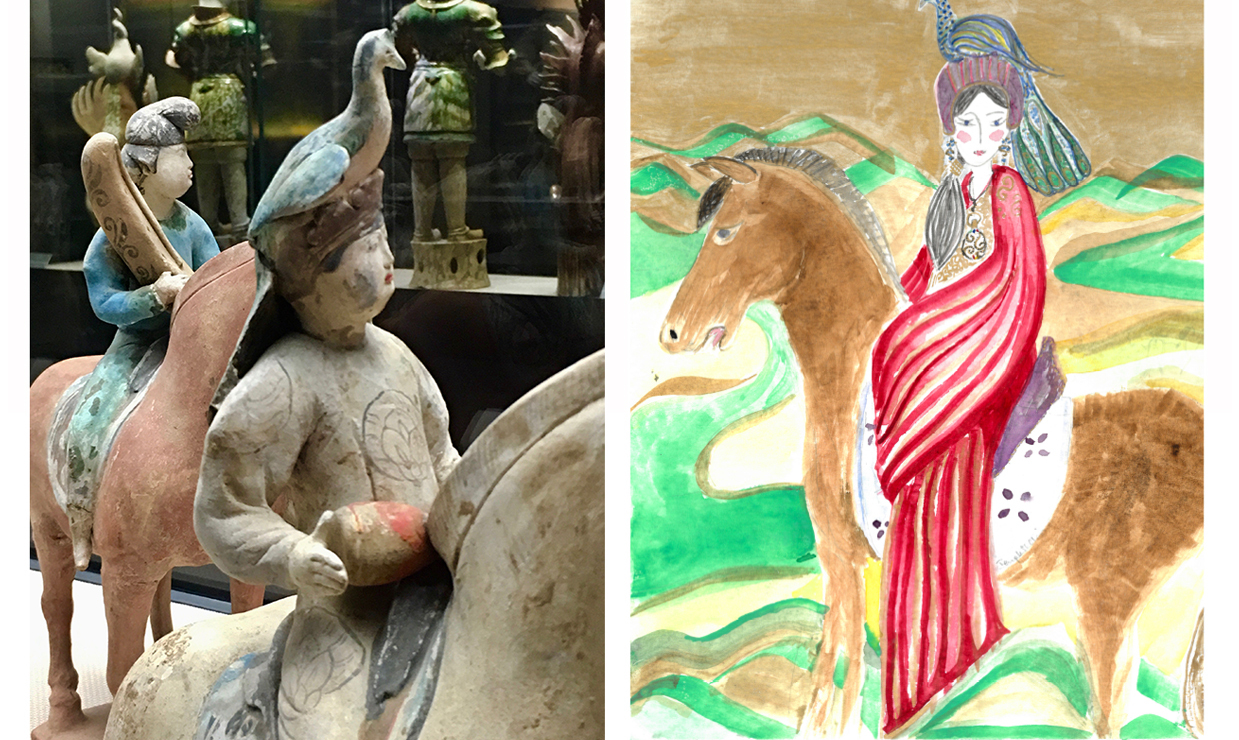
Some were the size of a small walk-in closet, others were larger rooms; all were decorated with murals depicting the life of the Buddha, or a depiction of travels across farmland and towns dotted with temples and stupas. Buddhist monks painted the murals; they travelled along the Silk Road bringing the teachings of Buddhism from northern India back to China. The colors ranged from muted pastels to strong pigments of greens, reds and blues.
The visit to the caves reignited my fascination with the Silk Road. Over the years, I have traveled across Turkey, stopping to visit the ruins of caravanserai, fortress-like structures where travelers could stay safely overnight. I have traveled in Kashmir, in northern India where you see architectural forms that you also find in Venice and Istanbul. Along the way, I read the romantic tales by Silk Road travelers like Jean Baptiste Tavernier and Ibn Battuta. To arrive in Dunhuang at the caves was yet another piece in this intricate collage of both concrete and abstract ideas that brings the value of the Silk Road to life.
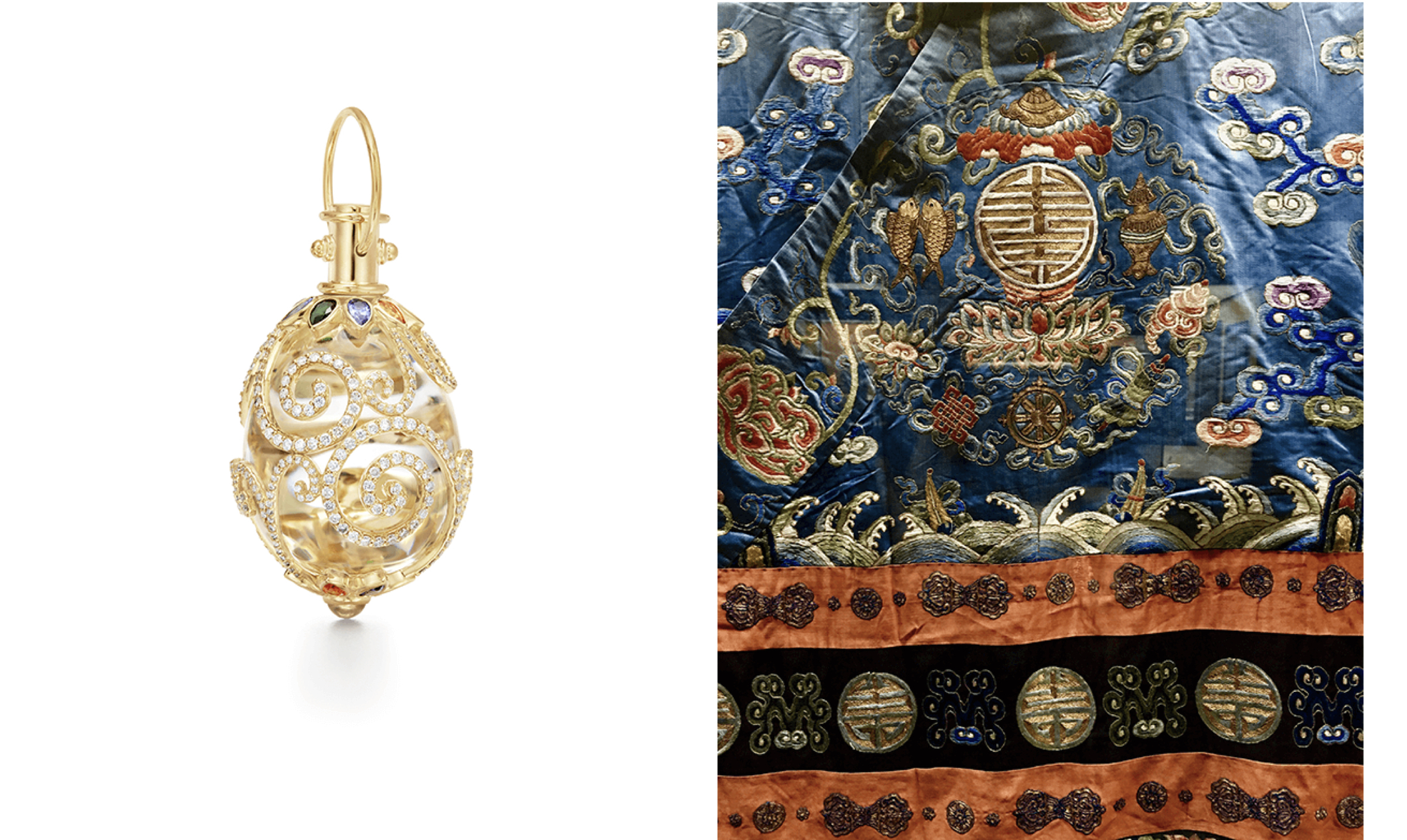
I returned home inspired to explore my memories and impressions from collected travels over the years along the Silk Road. It is my desire that the pieces in this collection ignite the imagination to celebrate the power of travel and the connectivity of influences across cultures from east to west.
